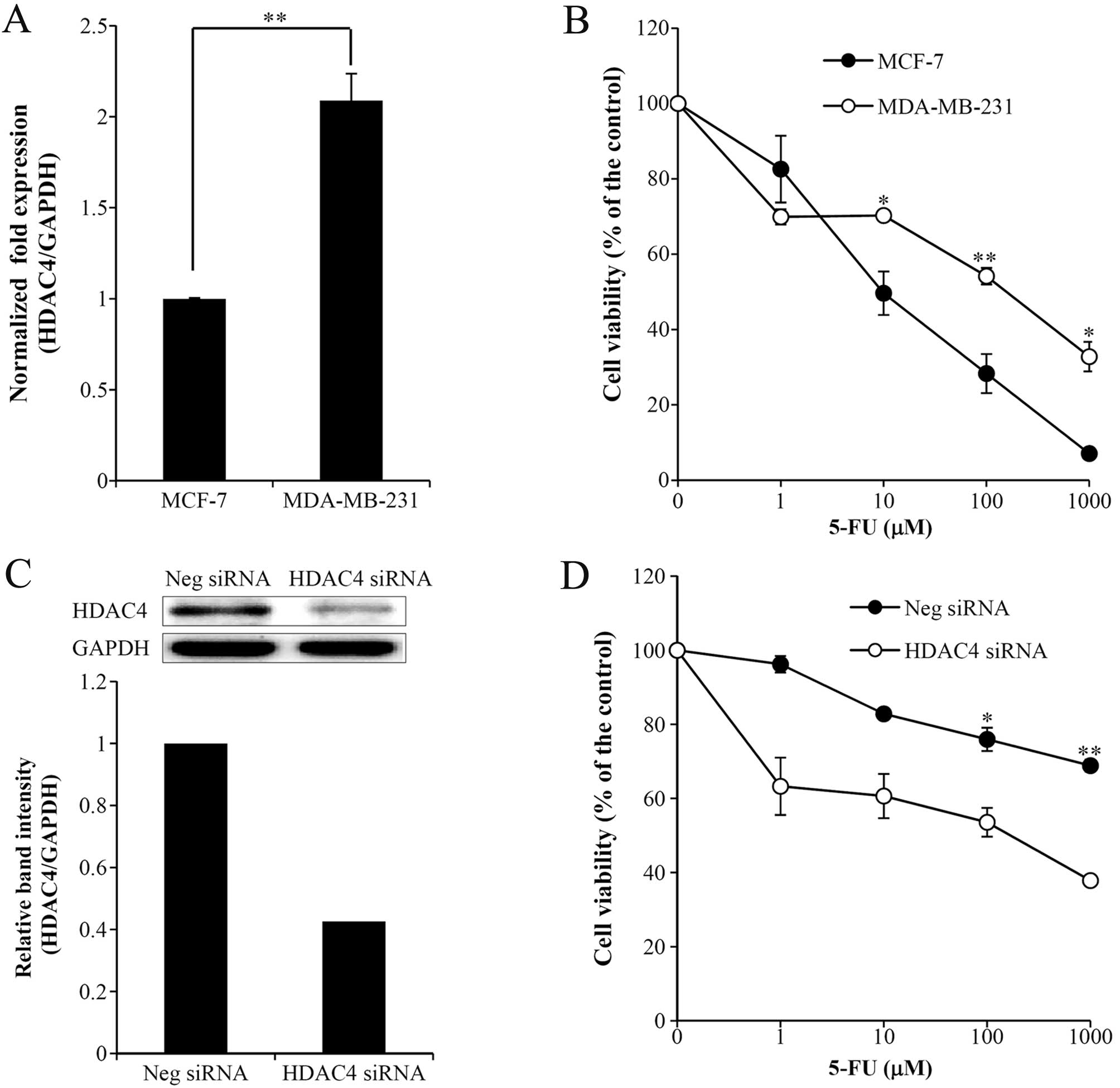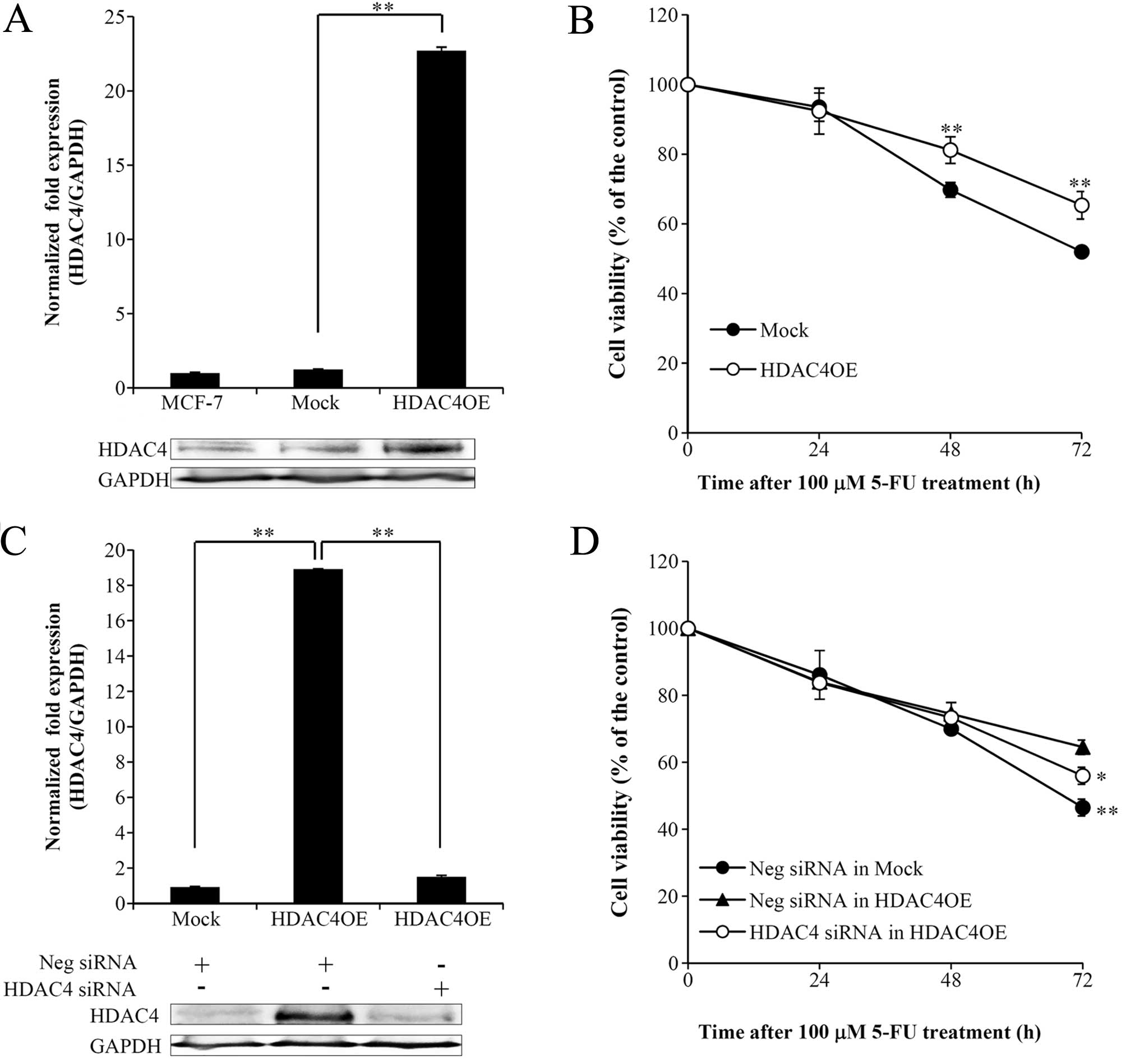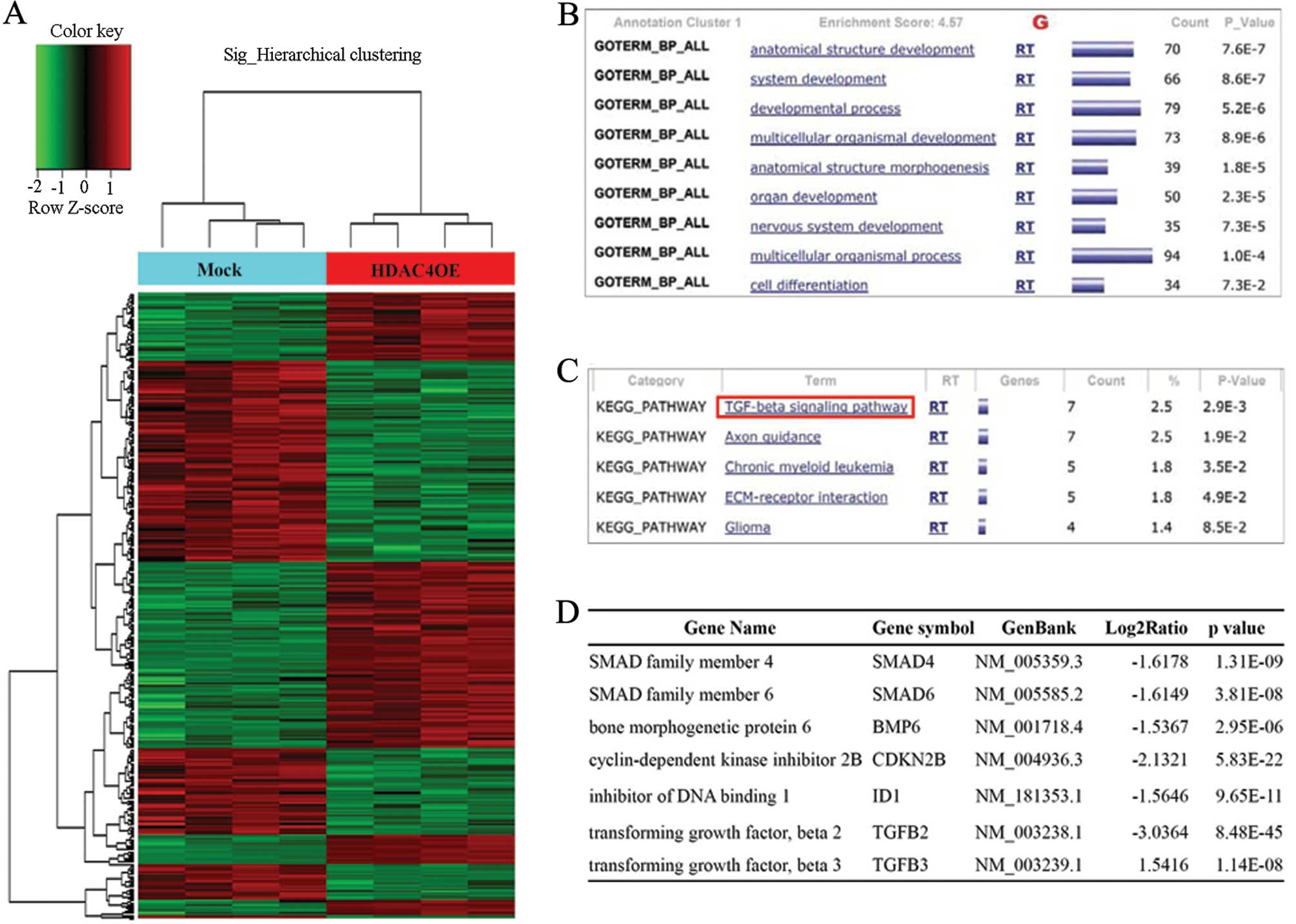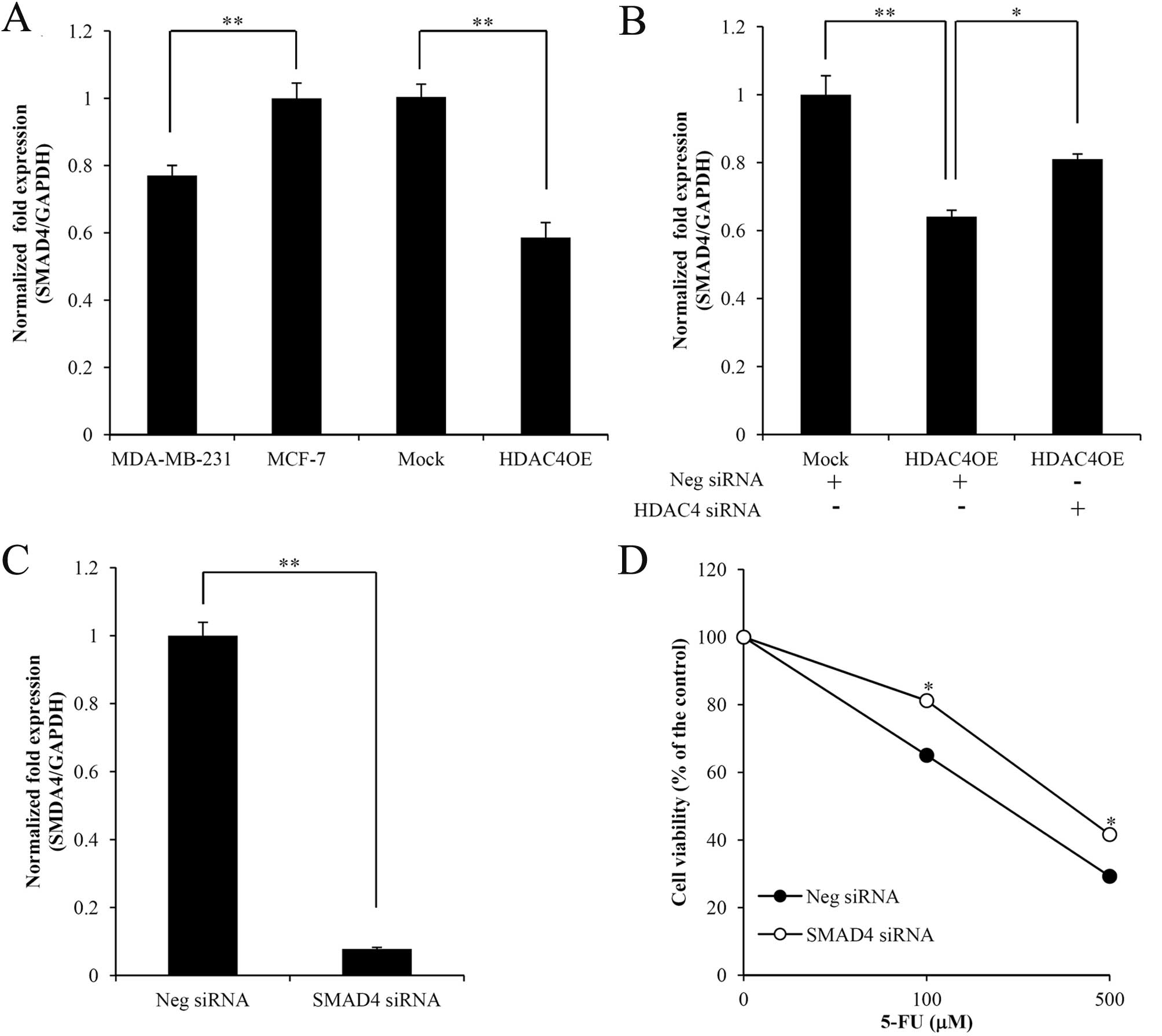|
1
|
Jones PA and Baylin SB: The epigenomics of
cancer. Cell. 128:683–692. 2007. View Article : Google Scholar : PubMed/NCBI
|
|
2
|
Ellis L, Atadja PW and Johnstone RW:
Epigenetics in cancer: targeting chromatin modifications. Mol
Cancer Ther. 8:1409–1420. 2009. View Article : Google Scholar : PubMed/NCBI
|
|
3
|
Sandoval J and Esteller M: Cancer
epigenomics: beyond genomics. Curr Opin Genet Dev. 22:50–55. 2012.
View Article : Google Scholar : PubMed/NCBI
|
|
4
|
Nakagawa M, Oda Y, Eguchi T, et al:
Expression profile of class I histone deacetylases in human cancer
tissues. Oncol Rep. 18:769–774. 2007.PubMed/NCBI
|
|
5
|
Khan O and La Thangue NB: HDAC inhibitors
in cancer biology: emerging mechanisms and clinical applications.
Immunol Cell Biol. 90:85–94. 2012. View Article : Google Scholar : PubMed/NCBI
|
|
6
|
Dell’Aversana C, Lepore I and Altucci L:
HDAC modulation and cell death in the clinic. Exp Cell Res.
318:1229–1244. 2012.PubMed/NCBI
|
|
7
|
Song B, Wang Y, Xi Y, et al: Mechanism of
chemoresistance mediated by miR-140 in human osteosarcoma and colon
cancer cells. Oncogene. 28:4065–4074. 2009. View Article : Google Scholar : PubMed/NCBI
|
|
8
|
Crea F, Nobili S, Paolicchi E, et al:
Epigenetics and chemoresistance in colorectal cancer: an
opportunity for treatment tailoring and novel therapeutic
strategies. Drug Resist Updat. 14:280–296. 2011. View Article : Google Scholar : PubMed/NCBI
|
|
9
|
Geng H, Harvey CT, Pittsenbarger J, et al:
HDAC4 protein regulates HIF1α protein lysine acetylation and cancer
cell response to hypoxia. J Biol Chem. 286:38095–38102. 2011.
|
|
10
|
Tinari N, De Tursi M, Grassadonia A, et
al: An epigenetic approach to pancreatic cancer treatment: the
prospective role of histone deacetylase inhibitors. Curr Cancer
Drug Targets. 12:439–452. 2012. View Article : Google Scholar : PubMed/NCBI
|
|
11
|
Kim MG, Pak JH, Choi WH, Park JY, Nam JH
and Kim JH: The relationship between cisplatin resistance and
histone deacetylase isoform overexpression in epithelial ovarian
cancer cell lines. J Gynecol Oncol. 23:182–189. 2012. View Article : Google Scholar : PubMed/NCBI
|
|
12
|
Park SY, Jun JA, Jeong KJ, et al: Histone
deacetylases 1, 6 and 8 are critical for invasion in breast cancer.
Oncol Rep. 25:1677–1681. 2011.PubMed/NCBI
|
|
13
|
Stronach EA, Alfraidi A, Rama N, et al:
HDAC4-regulated STAT1 activation mediates platinum resistance in
ovarian cancer. Cancer Res. 71:4412–4422. 2011. View Article : Google Scholar : PubMed/NCBI
|
|
14
|
Papageorgis P, Cheng K, Ozturk S, et al:
Smad4 inactivation promotes malignancy and drug resistance of colon
cancer. Cancer Res. 71:998–1008. 2011. View Article : Google Scholar : PubMed/NCBI
|
|
15
|
Takagi Y, Kohmura H, Futamura M, et al:
Somatic alterations of the DPC4 gene in human colorectal cancers in
vivo. Gastroenterology. 111:1369–1372. 1996. View Article : Google Scholar : PubMed/NCBI
|
|
16
|
Wang LH, Kim SH, Lee JH, et al:
Inactivation of SMAD4 tumor suppressor gene during gastric
carcinoma progression. Clin Cancer Res. 13:102–110. 2007.
View Article : Google Scholar : PubMed/NCBI
|
|
17
|
Hahn SA, Schutte M, Hoque AT, et al: DPC4,
a candidate tumor suppressor gene at human chromosome 18q21.1.
Science. 271:350–353. 1996. View Article : Google Scholar : PubMed/NCBI
|
|
18
|
Schutte M, Hruban RH, Hedrick L, et al:
DPC4 gene in various tumor types. Cancer Res. 56:2527–2530.
1996.PubMed/NCBI
|
|
19
|
Nagatake M, Takagi Y, Osada H, et al:
Somatic in vivo alterations of the DPC4 gene at 18q21 in human lung
cancers. Cancer Res. 56:2718–2720. 1996.PubMed/NCBI
|
|
20
|
Aitchison AA, Veerakumarasivam A, Vias M,
et al: Promoter methylation correlates with reduced Smad4
expression in advanced prostate cancer. Prostate. 68:661–674. 2008.
View Article : Google Scholar : PubMed/NCBI
|
|
21
|
Han S, Lu J, Zhang Y, et al: Recruitment
of histone deacetylase 4 by transcription factors represses
interleukin-5 transcription. Biochemical J. 400:439–448. 2006.
View Article : Google Scholar : PubMed/NCBI
|
|
22
|
Wang X, Feng Y, Xu L, et al: YY1
restrained cell senescence through repressing the transcription of
p16. Biochim Biophys Acta. 1783:1876–1883. 2008. View Article : Google Scholar : PubMed/NCBI
|
|
23
|
Ren G, Zhang G, Dong Z, et al: Recruitment
of HDAC4 by transcription factor YY1 represses HOXB13 to affect
cell growth in AR-negative prostate cancers. Int J Biochem Cell
Biol. 41:1094–1101. 2009. View Article : Google Scholar : PubMed/NCBI
|
|
24
|
Reddy SD, Pakala SB, Molli PR, et al:
Metastasis-associated protein 1/histone deacetylase 4-nucleosome
remodeling and deacetylase complex regulates phosphatase and tensin
homolog gene expression and function. J Biol Chem. 287:27843–27850.
2012. View Article : Google Scholar
|
|
25
|
Fraga MF, Ballestar E, Villar-Garea A, et
al: Loss of acetylation at Lys16 and trimethylation at Lys20 of
histone H4 is a common hallmark of human cancer. Nat Genet.
37:391–400. 2005. View
Article : Google Scholar : PubMed/NCBI
|
|
26
|
Elsheikh SE, Green AR, Rakha EA, et al:
Global histone modifications in breast cancer correlate with tumor
phenotypes, prognostic factors, and patient outcome. Cancer Res.
69:3802–3809. 2009. View Article : Google Scholar : PubMed/NCBI
|
|
27
|
Seligson DB, Horvath S, Shi T, et al:
Global histone modification patterns predict risk of prostate
cancer recurrence. Nature. 435:1262–1266. 2005. View Article : Google Scholar : PubMed/NCBI
|
|
28
|
Barlési F, Giaccone G, Gallegos-Ruiz MI,
et al: Global histone modifications predict prognosis of resected
non small-cell lung cancer. J Clin Oncol. 25:4358–4364.
2007.PubMed/NCBI
|
|
29
|
Uluer ET, Aydemir I, Inan S, Ozbilgin K
and Vatansever HS: Effects of 5-fluorouracil and gemcitabine on a
breast cancer cell line (MCF-7) via the JAK/STAT pathway. Acta
Histochem. 114:641–646. 2012. View Article : Google Scholar : PubMed/NCBI
|
|
30
|
Zheng G, Xiong Y, Yi S, et al: 14-3-3σ
regulation by p53 mediates a chemotherapy response to
5-fluorouracil in MCF-7 breast cancer cells via Akt inactivation.
FEBS Lett. 586:163–168. 2012.
|
|
31
|
Shi Q, Zhong YS, Yao LQ, et al:
Down-regulation of Smad4 enhances proliferation and invasion of
colorectal carcinoma HCT116 cells and up-regulates Id2. Mol Med
Rep. 5:89–95. 2012.PubMed/NCBI
|
|
32
|
Kim JY, Park DY, Kim GH, et al: Smad4
expression in gastric adenoma and adenocarcinoma: frequent loss of
expression in diffuse type of gastric adenocarcinoma. Histol
Histopathol. 20:543–549. 2005.PubMed/NCBI
|
|
33
|
Stuelten CH, Buck MB, Dippon J, Roberts
AB, Fritz P and Knabbe C: Smad4-expression is decreased in breast
cancer tissues: a retrospective study. BMC cancer. 6:252006.
View Article : Google Scholar : PubMed/NCBI
|
|
34
|
de Kruijf EM, Dekker TJ, Hawinkels LJ, et
al: The prognostic role of TGF-β signaling pathway in breast cancer
patients. Ann Oncol. 24:384–390. 2013.
|
|
35
|
He SM, Zhao ZW, Wang Y, et al: Reduced
expression of SMAD4 in gliomas correlates with progression and
survival of patients. J Exp Clin Cancer Res. 30:702011. View Article : Google Scholar : PubMed/NCBI
|
|
36
|
Li Q, Wu L, Oelschlager DK, et al: Smad4
inhibits tumor growth by inducing apoptosis in estrogen
receptor-alpha-positive breast cancer cells. J Biol Chem.
280:27022–27028. 2005. View Article : Google Scholar : PubMed/NCBI
|
|
37
|
Wilson AJ, Byun DS, Nasser S, et al: HDAC4
promotes growth of colon cancer cells via repression of p21. Mol
Biol Cell. 19:4062–4075. 2008. View Article : Google Scholar : PubMed/NCBI
|
|
38
|
Mottet D, Pirotte S, Lamour V, et al:
HDAC4 represses p21 (WAF1/Cip1) expression in human cancer cells
through a Sp1-dependent, p53-independent mechanism. Oncogene.
28:243–256. 2009. View Article : Google Scholar : PubMed/NCBI
|



















